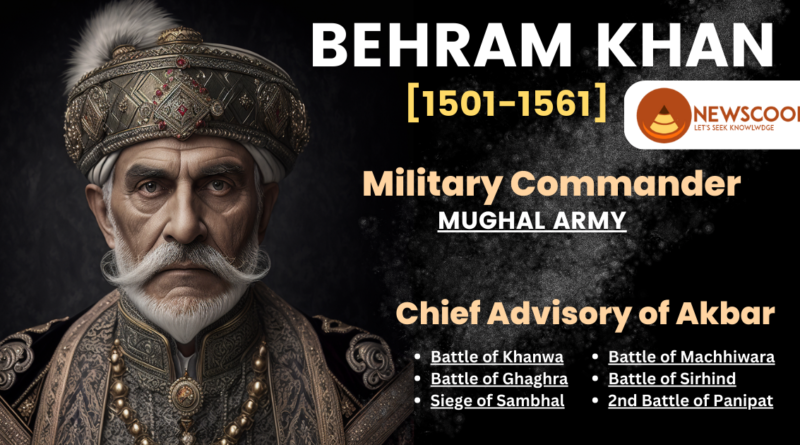Bairam Khan: History, Legacy, and Death of Mughal General
Bairam Khan was a key figure in the Mughal Empire, known for his impressive military skills and strategic mind. He played a significant role in developing the Mughal military and governance. This article will examine his life, major achievements, the events surrounding his death, and his lasting influence on the Mughal Empire.
We guarantee that the information presented here is accurate, and based on reputable historical texts. This ensures a true representation of Bairam Khan’s life, his contributions to the Mughal Empire, and his lasting legacy in Indian history.
Table of Contents
Sources of Information on Bairam Khan
The historical information about Bairam Khan comes from reliable sources on Mughal history. Key texts include Abu’l-Fazl’s Akbarnama, which details his military achievements and interactions with the Mughal court. Additionally, Dughlat, a contemporary historian and military leader, provides additional perspectives on the Mughal court and military. His writings help fill in some gaps in Bairam Khan’s story, especially regarding his role in the administration.
Several other historical documents, including works by chroniclers such as Abdul Qadir Badauni and Nizamuddin Ahmad, complement the primary sources and offer additional context to Bairam Khan’s life and death.
Who Was Bairam Khan?
Bairam Khan was a prominent general in the Mughal Empire under Emperor Akbar, recognized for his exceptional military skills and leadership that contributed to the empire’s expansion and military strategies. His life was marked by controversies, particularly regarding his sudden death, but his contributions to the Mughal military and his role in the court established him as a significant historical figure.
Historical Background of Behram Khan
Bairam Khan was born in Badakhshan in Central Asia and belonged to the Baharlu Turkoman clan of the Kara Koyunlu confederation. His family had a history of serving Babur with his father Seyfali Beg and grandfather Janali Beg both working under him.
On his mother’s side, he was related to Qara Iskander the ruler of Kara Koyunlu. His great-grandfather Pirali Beg had connections to Babur’s family as his niece Pasha Begum was one of Babur’s wives. At 16, Bahram Khan began his service with Babur, starting his notable career in the Mughal military.
Under Emperor Humayun, Bairam Khan played a key role in military campaigns in Benares, Bengal, and Gujarat. His strategic skills were recognized early, leading to his appointment as the Muhardar, or keeper of the seals. However, he was captured by Sher Shah Suri’s forces during the Battle of Kannauj in 1540. After escaping, he rejoined Humayun’s army in 1543.
While Humayun was in exile in Persia, Bairam Khan helped conquer Kandahar and served as its governor for nearly ten years, strengthening Mughal authority in the area. In 1556, when Humayun’s son Akbar was still young, Bairam Khan became a key figure in restoring the Mughal Empire.
In 1556, after Humayun’s sudden death, the young Akbar inherited the throne at just 13 years old. At this critical time, Bairam Khan served as the guardian and commander-in-chief of the Mughal army. He kept Humayun’s death a secret and secured Akbar’s position by taking control of Delhi and stabilizing the empire.
On February 14, 1556, Akbar was crowned as the Mughal emperor. Bairam Khan was then appointed as the Prime Minister and given the title Khan-i-Khanan, meaning “Lord of Lords.” His leadership was vital in the military campaigns that followed, particularly during the Second Battle of Panipat.
Role of Bairam Khan in Mughal Administration
- Prime Minister (Vakil): Bairam Khan was appointed as Vakil, overseeing the administration of the Mughal Empire and advising the emperor on state matters.
- Commander-in-Chief (Sipahsalaar): As Sipahsalaar, he led the Mughal army and played a crucial role in military campaigns, notably the Second Battle of Panipat in 1556.
- Khan-i-Khanan (Lord of Lords): He was given the prestigious title Khan-i-Khanan, reflecting his high status in the Mughal administration and his significance as a powerful noble in Akbar’s court.
- Consolidation of Power: Following Humayun’s death, he kept the emperor’s demise a secret, ensuring a smooth transition and protecting Akbar’s position.
- Governor of Key Territories: He governed regions like Kandahar, maintaining stability and loyalty in important areas of the empire.
- Reorganization of the Mughal Military: He focused on strengthening and reorganizing the Mughal military to ensure its efficiency and readiness for future challenges.
- Diplomatic and Political Influence: His ability to manage rival factions within the Mughal court helped maintain stability and secure Akbar’s reign during the early years of his rule.
Bairam Khan’s Major Military Campaigns
- Battle of Ludhiana (1542)
- Battle of Khanwa (1527)
- Battle of Ghaghra (1529)
- Siege of Sambhal (1540)
- Battle of Chausa (1539)
- Battle of Kannauj (1540)
- Battle of Machhiwara (1527)
- Battle of Sirhind (1555)
- Second Battle of Panipat (1556)
Bairam Khan’s Death
The key events surrounding his death involve the Battle of Pilwada in 1560, his interaction with Emperor Akbar, and the choices that ultimately led to his assassination.
Reasons for His Death
Bairam Khan’s death was the culmination of a series of factors:
- Akbar’s growing power: After the defeat in the Battle of Pilwada, Akbar’s authority was firmly established, and Bairam Khan’s power was seen as a potential threat to Akbar’s rule.
- Political Rivalries: Bairam Khan’s relationship with the court and particularly with Akbar became strained as Akbar began to seek greater autonomy. This led to growing tensions and the eventual decision to remove Bairam Khan from the scene.
- Maham Anga’s influence: As a powerful figure in Akbar’s court, Maham Anga may have had a hand in Bairam Khan’s elimination, seeing him as a threat to her family’s power within the Mughal administration.
The Battle of Pilwada (1560)
In 1560, the Mughal forces led by Bairam Khan faced a decisive defeat against Akbar’s army at the Battle of Pilwada. This battle marked a turning point in the relationship between Akbar and Bairam Khan. After Bairam Khan’s defeat, Akbar, now in control of the situation, had the power to make any decision regarding his former regent. However, Akbar showed mercy by offering Bairam two options:
- To take up the Jagirdari (governorship) of a village in Gujarat, or
- To go on a pilgrimage to Mecca (Hajj).
Given the circumstances and the apparent loss of power, Bairam Khan chose the option of going on the Hajj pilgrimage to Mecca. This decision was likely a move for spiritual solace after his fall from grace and the defeat in battle. By opting for the pilgrimage, Bairam Khan sought to distance himself from the political struggles and turmoil of the Mughal court.
However, while Bairam Khan was on route to fulfill his pilgrimage, a tragic turn of events awaited him. Instead of being allowed to peacefully travel to Mecca, Bairam Khan was ordered to proceed to Gujarat under the pretext of receiving a Jagirdari. Upon his arrival in Gujarat, Bairam Khan was assassinated.
It is believed that the assassination was orchestrated by the Mughal court, likely due to the influence of those who wanted to eliminate Bairam Khan as a potential rival and secure Akbar’s control over the empire. Some historical accounts suggest that Maham Anga, who had significant influence in court, may have played a role in this political decision.

